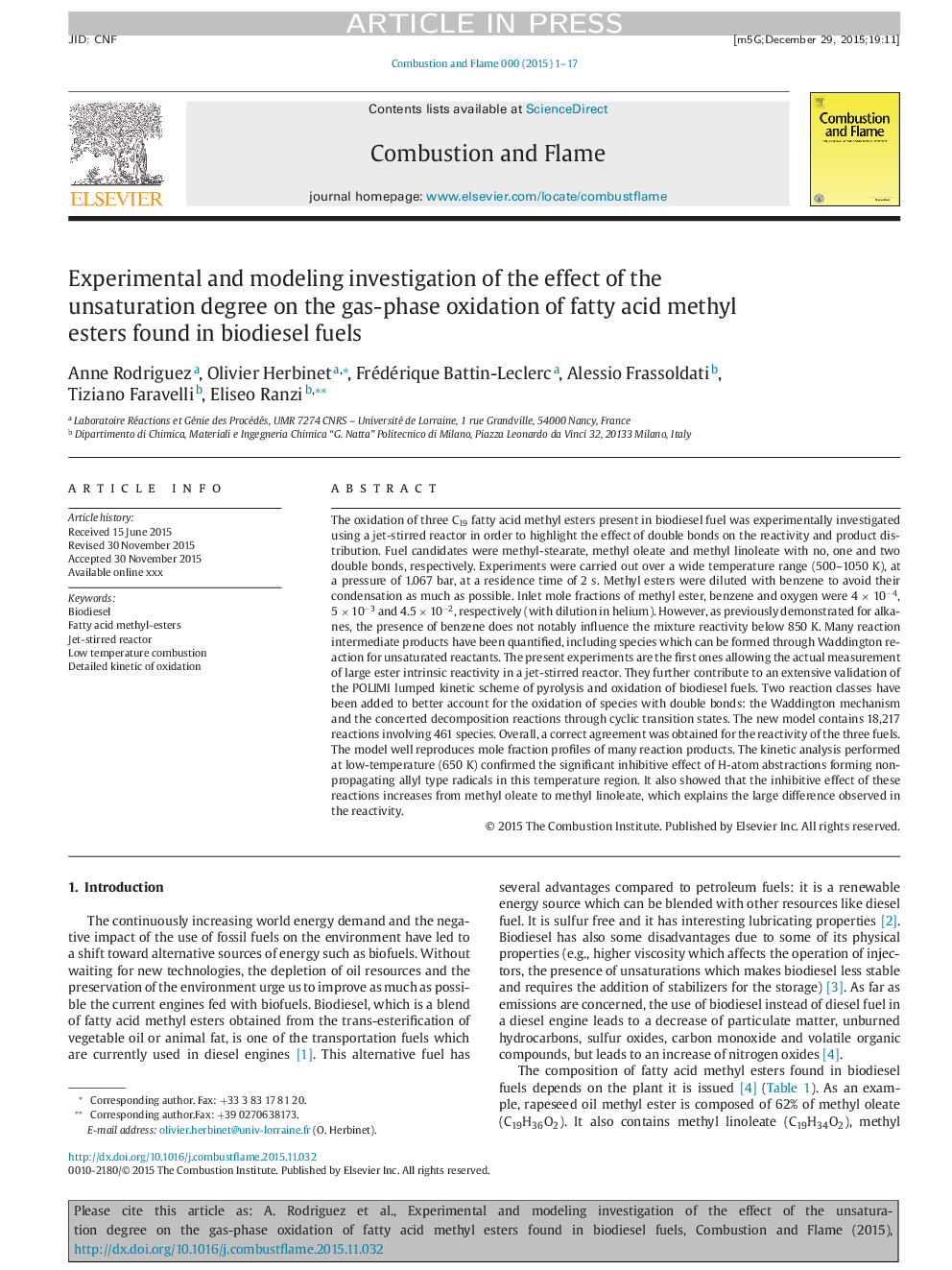| Article ID | Journal | Published Year | Pages | File Type |
|---|---|---|---|---|
| 6594325 | Combustion and Flame | 2016 | 17 Pages |
Abstract
The oxidation of three C19 fatty acid methyl esters present in biodiesel fuel was experimentally investigated using a jet-stirred reactor in order to highlight the effect of double bonds on the reactivity and product distribution. Fuel candidates were methyl-stearate, methyl oleate and methyl linoleate with no, one and two double bonds, respectively. Experiments were carried out over a wide temperature range (500-1050Â K), at a pressure of 1.067Â bar, at a residence time of 2Â s. Methyl esters were diluted with benzene to avoid their condensation as much as possible. Inlet mole fractions of methyl ester, benzene and oxygen were 4Â ÃÂ 10â4, 5Â ÃÂ 10â3 and 4.5Â ÃÂ 10â2, respectively (with dilution in helium). However, as previously demonstrated for alkanes, the presence of benzene does not notably influence the mixture reactivity below 850Â K. Many reaction intermediate products have been quantified, including species which can be formed through Waddington reaction for unsaturated reactants. The present experiments are the first ones allowing the actual measurement of large ester intrinsic reactivity in a jet-stirred reactor. They further contribute to an extensive validation of the POLIMI lumped kinetic scheme of pyrolysis and oxidation of biodiesel fuels. Two reaction classes have been added to better account for the oxidation of species with double bonds: the Waddington mechanism and the concerted decomposition reactions through cyclic transition states. The new model contains 18,217 reactions involving 461 species. Overall, a correct agreement was obtained for the reactivity of the three fuels. The model well reproduces mole fraction profiles of many reaction products. The kinetic analysis performed at low-temperature (650Â K) confirmed the significant inhibitive effect of H-atom abstractions forming non-propagating allyl type radicals in this temperature region. It also showed that the inhibitive effect of these reactions increases from methyl oleate to methyl linoleate, which explains the large difference observed in the reactivity.
Related Topics
Physical Sciences and Engineering
Chemical Engineering
Chemical Engineering (General)
Authors
Anne Rodriguez, Olivier Herbinet, Frédérique Battin-Leclerc, Alessio Frassoldati, Tiziano Faravelli, Eliseo Ranzi,
